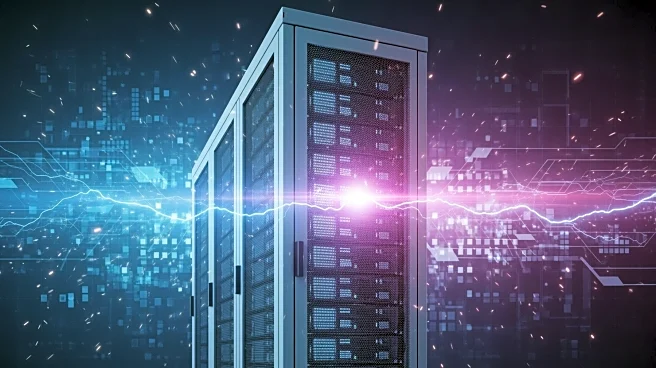What's Happening?
Data centers are encountering new power quality challenges due to the increasing demand from AI and high-performance computing (HPC) applications. These applications are sensitive to power anomalies such as voltage fluctuations and frequency deviations,
which can lead to processor errors, memory instability, and system failures. The surge in power usage by AI models creates 'dirty' power, characterized by harmonics and voltage distortions, which can affect the grid and lead to inefficiencies. New technologies, such as capacitive energy storage systems, are being developed to address these issues by balancing power supplies during voltage surges.
Why It's Important?
The rise of AI and HPC applications is transforming the landscape of data centers, making power quality a critical issue. Poor power quality can lead to significant operational disruptions and financial losses for data centers, which are essential for supporting modern digital infrastructure. Addressing these challenges is crucial for maintaining the reliability and efficiency of data centers, which are integral to various industries relying on AI-driven insights and services. The development of new technologies to mitigate power quality issues can enhance the stability of the power grid and reduce the risk of equipment failure.
What's Next?
Data center operators are expected to adopt new technologies and strategies to improve power quality. This includes consulting on harmonics, deploying smart harmonic filters, and collaborating with utilities to manage large AI loads. As AI applications continue to grow, the demand for innovative solutions to power quality challenges will likely increase, prompting further advancements in energy management technologies.
Beyond the Headlines
The focus on power quality highlights the broader implications of AI's energy consumption and its environmental impact. As data centers strive to meet the demands of AI applications, there is a growing need for sustainable energy practices and infrastructure upgrades to support the digital economy without compromising environmental goals.













